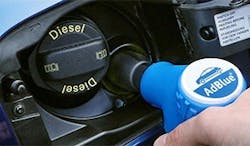Tier 4 Final Engines: Basic understanding of fuel, DEF, exhaust after-treatment, and regeneration
As most people are aware, the EPA signed the final rule introducing Tier 4 emission standards back on May 11, 2004 to reduce two key pollutants: particulate matter (PM) and nitrogen oxide (NOx) compounds. NOx is known to contribute to the formation of smog and ground-level ozone and PM exposure has been shown to have adverse health effects on the respiratory system.
The impact the Tier 4 final engine mandate has had on construction and rental companies and their operations have been profound. In some cases, an outright panic over Diesel Exhaust Fluid (DEF), regeneration, training service staff, and downtime.
The complications are not limited to air compressors and encompass just about every diesel engine driven product/piece of equipment in the equipment yard of construction companies or rental fleet.
In an effort to help educate and hopefully ease some fears, Kaeser's white paper "Tier 4 Final Engines: Considerations for Fuel, DEF, Exhaust After-Treatment, and Regeneration" provides some basic facts and information on Tier 4 final engines in regards to diesel engine equipment such as portable air compressors.
By submitting this form, you agree that we may share your information with Kaeser Compressors, Inc.
